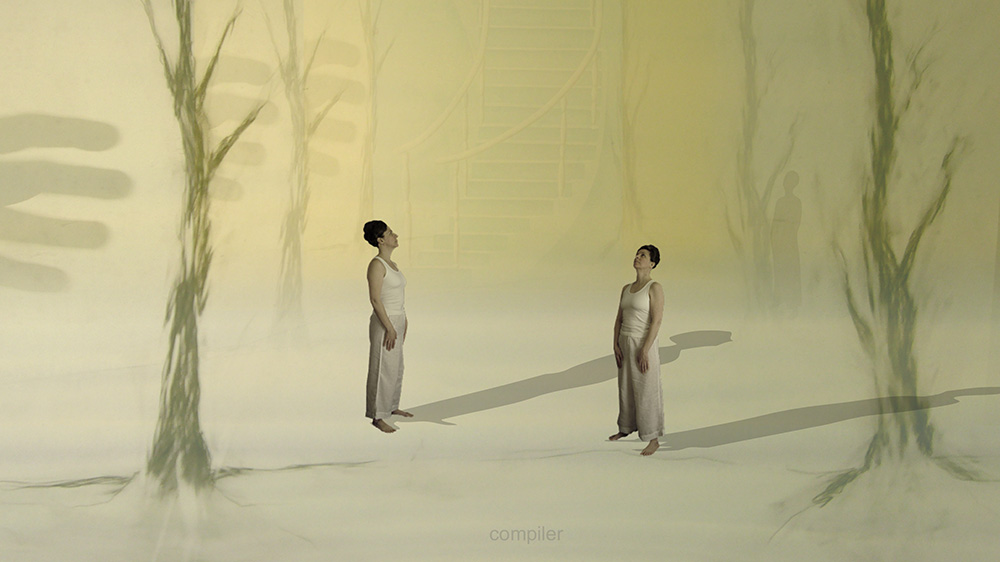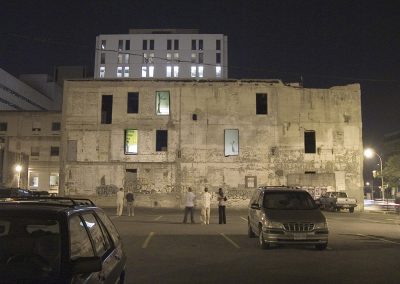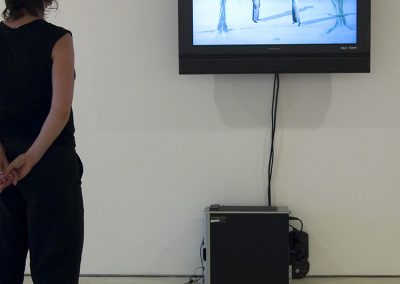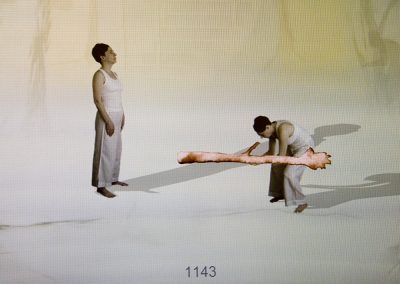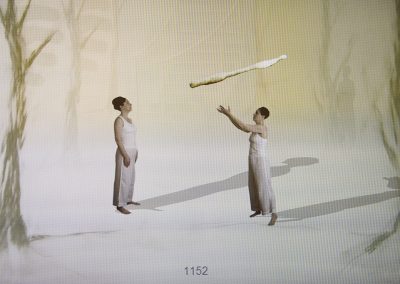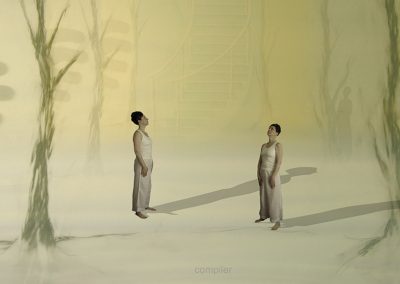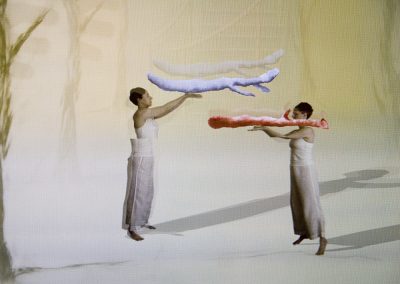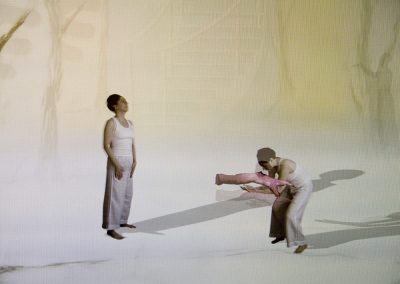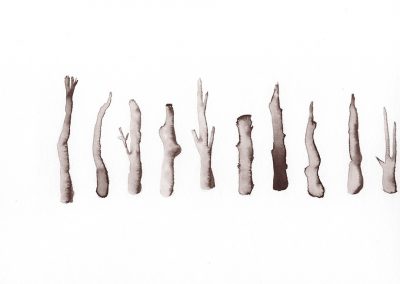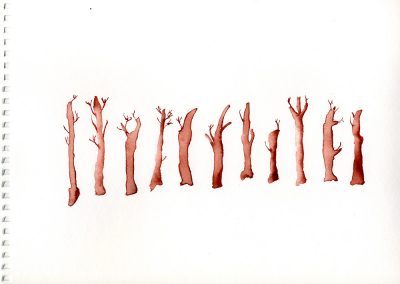Compiler
(For the victims of the war in Iraq)
Compiler. 2007
Engine: Colin Gay
Code dynamically dropping drawings into animated characters.
Characters catch and toss each tree limb, never letting one fall to the ground.
Numerical counting alludes to the accumulation of lives lost during the war in Iraq.
Interface consists of layered drawings. Characters are stop-motion animated.
Exhibitions:
Curated by Paul Walde. in LOLAFEST, building size rear projections in 3 windows.
Otherwise, displayed on wall mounted monitor.
See text below for more information.
Background:
Compiler (to the victims of the invasion of Iraq) (2007-)
media: custom software, digitized database of tree limb drawings, digital collages, stop motion animated figures
Software driven works using drawings, animation, looping and dynamically accessed database of hundreds of ink tree limb drawings to be added to until war in Iraq is finished. The tree-limbs – original ink drawings – are incorporated into a database, making every presentation of the work unique and unscripted. Custom code, written to randomly access and animate this database of trees means it will never be known which tree in which order enters the piece at any given time. The work is potentially never ending as the database of tree-limb ink drawings will be continuously added to (compiled) until the current war in Iraq ends.
Compiler (to the victims of the invasion of Iraq) (2007) – outdoor projection version
media: custom software, digitized database of tree limb drawings,
3 computer systems powered by 1 generator, 3 projectors, window scrims, 4 storey abandoned building in London, Ont.
3 separate cpu/projectors create the ‘building interface’ and art work.
Compiler uses drawings, animation, looping and dynamically accessed database of hundreds of ink tree limb drawings to be added to until war in Iraq is finished. Projected from inside abandoned building so the building became integral to the work. Reworked Compiler to incorporate abandoned building as interface. Projected though large holes in the side of a London building under renovation, the subtle comment on the accumulative affects of war is underscored through its location and contrasting environment.

